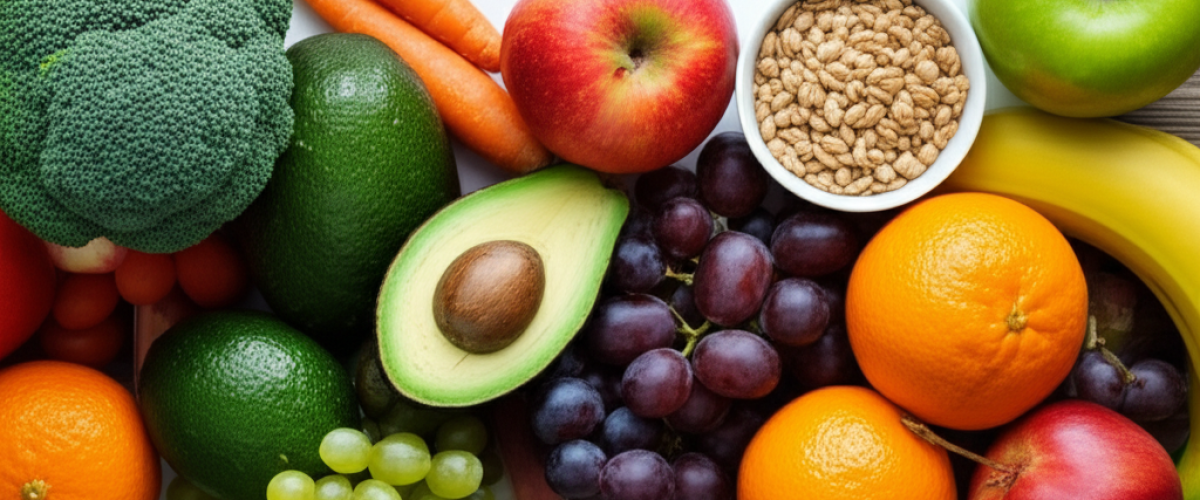The Role of Fiber in Supporting Weight Loss Goals
Estimated Reading Time: 6 minutes
- Fiber increases satiety, helping to control hunger.
- Promotes healthy digestion and regularity.
- Helps regulate blood sugar levels, preventing crashes.
- Low-calorie, nutrient-dense option for meals and snacks.
Table of Contents
- Introduction
- What Is Fiber?
- How Fiber Supports Weight Loss
- How to Incorporate More Fiber Into Your Diet
- Potential Challenges and Considerations
- Conclusion
- FAQ
Introduction
In the quest for effective weight management, many individuals focus on calories in versus calories out. However, one often overlooked aspect of nutrition is how the type of calories consumed can significantly influence weight loss success. Enter fiber—an essential nutrient that not only supports digestive health but also plays a pivotal role in weight loss. This blog post delves into the various ways fiber contributes to successful weight management, helping you understand its importance and how to incorporate more of it into your diet.
What Is Fiber?
Fiber is a type of carbohydrate that the body cannot digest. Unlike other carbs that break down into sugar molecules, fiber remains intact as it passes through the digestive system. There are two main types of fiber:
- Soluble Fiber: Dissolves in water and forms a gel-like substance. Found in foods like oats, nuts, beans, and some fruits, soluble fiber can help lower cholesterol levels and stabilize blood sugar.
- Insoluble Fiber: Does not dissolve in water and adds bulk to the stool, helping to keep you regular. It is found in whole grains, vegetables, and wheat bran.
Both types of fiber offer unique benefits and should be included in a balanced diet.
How Fiber Supports Weight Loss
1. Increases Satiety
One of the primary reasons fiber aids in weight loss is its ability to increase feelings of fullness or satiety. When you consume fiber-rich foods, they take longer to chew and digest, which allows you to feel satisfied for a longer period. This leads to reduced hunger pangs and urges to snack, ultimately aiding in managing overall calorie intake.
Example: Eating a bowl of oatmeal topped with berries and nuts for breakfast can keep you full well into lunchtime, preventing the mid-morning cravings often associated with refined carbohydrate breakfasts.
2. Promotes Healthy Digestion
A healthy digestive system is essential for effective weight management. Fiber improves bowel health, prevents constipation, and aids in regularity. When your digestive system is functioning optimally, your body can better absorb nutrients and eliminate waste, making it easier to maintain a healthy weight.
- Prevents constipation by adding bulk to stools.
- Supports the growth of beneficial gut bacteria.
- Reduces instances of bloating and digestive discomfort.
3. Helps Regulate Blood Sugar Levels
Fiber plays a vital role in controlling blood sugar levels. Soluble fiber, in particular, slows down the absorption of sugar, which helps prevent spikes and crashes in blood glucose levels. This can lead to fewer cravings for sugary snacks and improved energy levels throughout the day.
Example: A black bean salad with fresh vegetables offers soluble fiber to help keep your blood sugar steady while providing essential nutrients.
4. Low in Calories
Many fiber-rich foods are naturally low in calories, making them an excellent choice for those looking to lose weight. Foods high in fiber often have fewer calories per volume, meaning you can eat larger portions without exceeding your caloric goals.
- Leafy greens (spinach, kale)
- Cruciferous vegetables (broccoli, cauliflower)
- Legumes (lentils, chickpeas)
- Whole grains (quinoa, brown rice)
- Fruits (apples, bananas, berries)
How to Incorporate More Fiber Into Your Diet
Now that you understand the benefits of fiber for weight loss, let’s explore practical tips for incorporating more of it into your daily meals:
1. Start with Breakfast
- Choose Whole Grains: Opt for whole-grain cereals, oatmeal, or whole wheat bread. These options are higher in fiber than refined grains.
- Add Fruits and Nuts: Top your oatmeal or yogurt with fiber-rich fruits and a handful of nuts for an extra crunch.
2. Snack Smart
- Veggies and Hummus: Carrot sticks, celery, and bell pepper slices are excellent fiber-rich snacks when paired with hummus.
- Fruit: Keep fresh or dried fruits like apples, pears, or prunes on hand for portable snacks.
3. Plan Balanced Meals
- Fill Half Your Plate with Vegetables: Aim to include a variety of colors and types of vegetables in your meals to maximize fiber intake.
- Include Legumes in Your Dishes: Add lentils or beans to salads, soups, and casseroles for a protein and fiber boost.
4. Gradually Increase Fiber Intake
To avoid digestive discomfort, it’s essential to increase fiber intake gradually. Aim to add 5 grams of fiber per day until you reach the recommended daily intake of about 25 grams for women and 38 grams for men.
Potential Challenges and Considerations
While fiber is an essential part of a healthy diet, it’s important to be aware that some individuals may experience gas, bloating, or discomfort when increasing fiber intake. To mitigate these effects, consider the following:
- Stay Hydrated: Drink plenty of water to help fiber do its job and move through your digestive tract.
- Pay Attention to Food Choices: Some high-fiber foods, such as beans and cruciferous vegetables, may cause more gas than others. Monitor your body’s response and adjust your intake accordingly.
Conclusion
Incorporating a sufficient amount of fiber into your diet is a powerful strategy for achieving and maintaining weight loss. By increasing satiety, promoting healthy digestion, regulating blood sugar levels, and providing a low-calorie option, fiber can be your ally in the journey toward weight management.
As you look forward, consider how you can creatively add more fiber-rich foods to your meals. From hearty breakfasts to satisfying snacks, the options are endless. Remember, a balanced diet enriched with fiber is not just about weight loss; it’s a commitment to overall health and well-being. So, load up on that fiber and watch your weight loss goals become more achievable!
FAQ
Q: What are some quick sources of fiber?
A: Whole grains, legumes, fruits, and vegetables are excellent quick sources of fiber.
Q: Can I consume too much fiber?
A: Yes, consuming too much fiber too quickly can cause digestive issues. It’s best to increase your intake gradually.
Q: Is fiber beneficial for everyone?
A: While fiber is beneficial for most people, some individuals with specific digestive conditions may need to limit certain types of fiber. Always consult with a healthcare provider for personalized advice.

